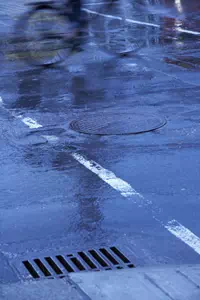|
 Stormwater
Permitting Stormwater
Permitting
Stormwater carries away dirt and debris, oil from parking
lots, lawn chemicals, pesticides, and other pollutants. To minimize the
effect of these pollutants on our waterways, under the authority of the CWA,
EPA has promulgated stormwater regulations (40
CFR 122.26 -- Stormwater Discharges).
Phase I of the stormwater program was promulgated in 1990
and applied to:
- Medium and large municipalities (stormwater systems serving
a population of 100,000 people or more)
- Certain industrial facilities (not medical facilities)
- Any construction activity disturbing greater than 5 acres
("large construction sites")
Phase II of the stormwater program was promulgated in 1999
and applies to:
- Small municipalities
- Publicly owned universities, medical facilities, and similar facilities
located in urban areas
- Construction activity greater than 1 acre and less than
5 acres ("small construction sites")
Construction activities at medical facilities are covered by Phase
I or II regulations if those activities are meet the threshold acreage requirements. These
rules apply to the construction of a new medical facility or to expansion of existing
medical facilities (e.g., building, parking lots). To comply with the construction
stormwater regulations, a healthcare facility must obtain a permit from their
state environmental agency or EPA (depending on the status of the agency) and
prepare a stormwater management plan, which includes a pollution prevention
element. Once the construction activity is completed, the facility then
submits a notice of permit termination. More information on construction
stormwater permits (including state-specific guidance) is available at the Construction
Industry Compliance Assistance (CICA) Center.
|

